Mediterranean in Miami
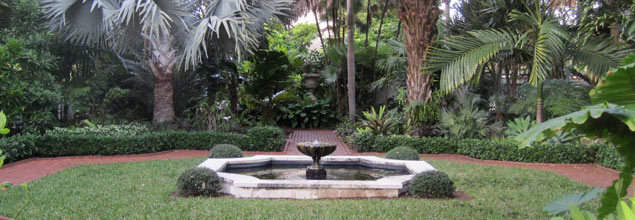 Four Arts Botanical Garden, Palm Beach, FL
Four Arts Botanical Garden, Palm Beach, FL
In preparing for What’s Out There Weekend Miami (taking place on April 12-13), TCLF created nearly 50 entries about South Florida’s regional parks, plazas, neighborhoods, estates, and streetscapes for the What’s Out There database. Included is a remarkable array of designed landscape types in the Mediterranean style. This prompted a reevaluation of TCLF’s definition of the style, which previously had focused exclusively on work in Southern California during the same time period.
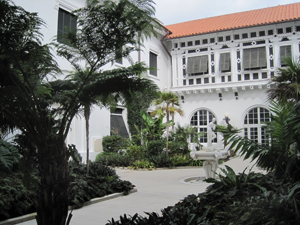
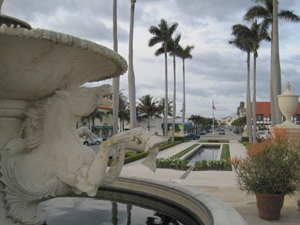
(upper) Henry M. Flagler Museum Courtyard, Palm Beach, FL, 2010
(lower) Memorial Fountain Park, Palm Beach, FL 2010.The Mediterranean style first appeared in South Florida with Addison Mizner’s design for the Everglades Club on Worth Avenue in Palm Beach. The club and the street’s subsequent development provided the seeds for a stylistic character that spread throughout the region, the style of choice for commercial ventures in Palm Beach, Miami, and Coral Gables from the early 1900s to the Great Depression. Inspired by exotic movie sets and print media from California, the Mediterranean style merged a leisurely European glamour and class with the subtropical climate of South Florida. At the time, the region was still pioneer country, largely undeveloped and swampy with simple vernacular architecture. This elegant, tropical vision, fabricated by artists and developers, including Denman Fink and George Merrick, respectively, encouraged outside investors to come to Florida and make the Mediterranean fantasy a reality. Boom and bust cycles triggered by devastating hurricanes and economic fluctuations resulted in uneven development but left a lasting Mediterranean-inspired design legacy in the region.
TCLF’s What’s Out There definition for the Mediterranean style has been updated to reflect this expanded diversity in our database, and also shows the program’s continuing growth and depth of knowledge. Launched in October 2009, the database now includes more than 1500 different landscapes with 10,000 images and links to more than 750 designer profiles. It continues to be the most comprehensive and authoritative database of historic designed landscapes in the US.
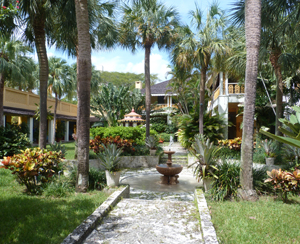
Bonnet House Museum & Gardens, Fort Lauderdale, FL, photo by Lisa
Marie Jacobs, 2012.Here is the updated definition:
Found primarily in the California coastal zone from Santa Barbara to Los Angeles and in Florida boomtowns including Miami, Boca Raton, Palm Beach, and Sarasota, this variant of the Beaux Arts Neoclassical style was popular in the American Country Place Era (late 19th century to the Great Depression). Taking hold in popular culture and made possible by a fecund Mediterranean-like climate, these designs- often defined by orthogonal geometry and axial design elements- benefited from an internationally diverse plant palette that ranged from old roses and bougainvillea to citrus, palms, cacti, and cycads planted in outdoor rooms and courtyards. Typically employing Beaux Arts/ Neoclassical plans, forms, and elements from Italian Renaissance/Baroque and Islamic-era Spanish and Mediterranean prototypes, the style sometimes drew from multiple sources on a single property.
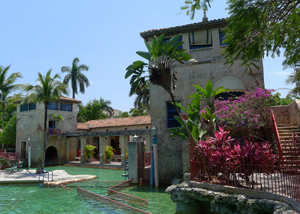
Venetian Pool, Coral Gables, FL, photo by Marten Kuilman, 2013.In California the style featured local plants adapted to the arid climate paired with limestone architecture developed from existing local Spanish Colonial precedents. Along with Lockwood de Forest, Jr., such noted designers as Paul Thiene, A.E. Hansen, Richard Requa, and Charles Gibbs Adams popularized this style in California. In Florida, imported subtropical plants and oolitic limestone construction were employed in civic landmarks, subdivisions, and estates to create an appearance of history and permanence. In Florida the style was promoted by developer George Merrick, artist Denman Fink, architects Addison Mizner and August Geiger, and landscape architects Diego Suarez and Frank Button.
Register to see some of these remarkable landscapes during What’s Out There Weekend Miami, April 12-13.



